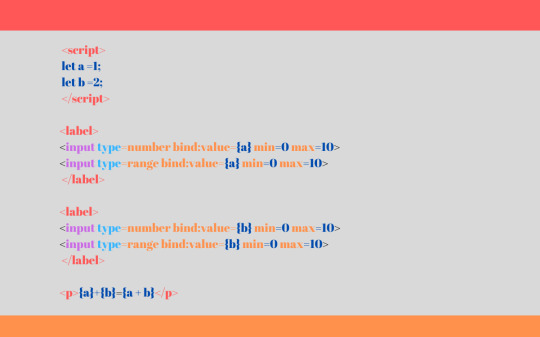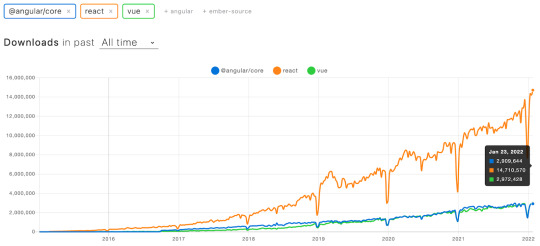Text
Network TOPOLOGY

Network topology refers to an arrangement of nodes in a computer network. Node refer to communication devices that can be connected together and are able to send or receive information. These devices can be hubs, switches, servers, or routers. Topology can either be the physical and logical aspect of the network. Physical topology refers to the physical structure of the network (how they are connected in real time) while logical topology refers how the network is “logically” connected.
Point-to-point
The most basic network topology is the point-to-point which is connected through a single network medium. The major advantage of this network is that no extra hardware is required to set it up.
There are two nodes at each end point and the potential of failure is limited within these nodes. The bandwidth (the maximum rate of data that can be transmitted within a collision domain) is limited to the medium connecting the two devices.
Taking a step further, we have the Bus Topology. In this topology, every node, i.e. every device on the network, is connected to a single main cable called the bus. Data is transmitted through a single route, from one point to another. We cannot transmit data both ways. If the network specifically has two end points, it is referred to as a “linear bus”.
Ring Topology
In this topology, every computer is connected to another computer on each side. The previous computer to the first computer, forming a ring shape. This topology ensures that every computer to has exactly two neighboring computers. Here, each device is connected to with its exactly two neighboring devices, like points on a circle which forms like a ring structure.
Repeaters are used at several points in the network to prevent packet loss. To send a data, a computer catches the token, attaches its message to it, and then lets the token continue to travel around the network until it gets to its destination.
Star Topology
This is a type of network topology in which all the nodes are connected via cables to a single node called a hub, which is the central node. The hub can be either active or passive in nature. Active hubs have repeaters, while passive hubs are called non-intelligent nodes as the do not have any repeaters in them.
Mesh Topology
Mesh Topology is a kind of network setup where all the nodes on the network are interconnected. In this topology, even if one of the connections goes down, it allows other nodes to be distributed.
Nodes connected in this topology can be computers, switches, hubs or any other device. Connection between devices in this topology occurs randomly.
Hybrid Topology
This is a type of network topology that combines two or more network topology. The combined network each have their individual nodes attached to them and they can communicate with the nodes within their network as well as nodes connected on the other network as well.
There are a few types of hybrid topology but the most popular types are; Star-Ring hybrid topology, Star-bus hybrid topology, and Hierarchical or Tree topology.
1 note
·
View note
Text
Technology Update
Front-End Developments Trends to Watch in 2022
Front-End Development hasn't always gotten the respect it deserves compared to Back-End Development.
Many engineers used to look down on JavaScript, but times have changed. Web applications are growing rapidly, mainly due to the development of open-source tools. This development has moved us farther away from jQuery and has made almost every tech company use the latest JavaScript and tools like ESLint, Babel, and Webpack.
Nowadays, the Front-End is moving at a speed that makes it hard to follow. This post is all about catching up with the directions of this development area in 2022. Perhaps you will find something for yourself in these trends.
Svelte is Gaining Popularity
Svelte is a relatively new tool, which in theory started much too late to be able to have a chance against React, Vue, and Angular. But it's steadily gaining popularity at an unprecedented pace.
In 2021, Stack Overflow Users announced it as the most loved front-end framework. But Svelte is more than that. It is a compiler that builds an optimized front end. Svelte is not imported into the application like other popular frameworks. Instead, code written in Svelte gets compiled into pure JavaScript. This allows Svelte to win in terms of speed against frameworks such as React or Vue.
Using the Svelte framework is very easy. Here is an example of how you'd use state + forms:

Simple as that! Notice three things here:
Forms are handled in a simple, elegant way, like in the old days, before the SPA frameworks. There is no need to attach onChange props to the inputs.
Markup and logic lives side by side, encapsulating the logic and a visible layer.
State is easy to manage.
No wonder the framework is gaining traction in the community. It is only a matter of time before new popular platforms are created in Svelte.
React, Vue, and Angular are here to stay!!
I started my adventure with the Front-End just before the premiere of Angular 2, about six years ago. I can’t count how many times since then I have read that Vue, React, or Angular is dying.
The truth has turned out to be quite different, though. Each of these three frameworks has grown in popularity since its inception.
Here is the chart (Source: Npm Trends). It is worth adding that every sudden drop on the chart is there because of December.

Angular vs React vs Vue download trends
Take a look at the chart above. Notice that Angular has grown in popularity by a factor of over ten. React and Vue grew even faster. All three frameworks support pretty much the same use cases.
This means no matter which of the three frameworks you choose, you can expect it to be used and supported for years to come.
It’s worth noting that React didn't have any significant changes in 2021. Yet the pace of its adaptation is astounding. It is likely because of the ecosystem around the technology. React has the largest selection of libraries and supporting frameworks.
Two examples worth mentioning are Next and Gatsby. The latter is one of the perpetrators of the next trend.
Frameworks need to support both Static and Dynamic Pages
Let's establish what Static and Dynamic Pages are in practical terms.
Dynamic Pages fetch and process the content when the user opens them. Static Pages are per-defined during the build time. They become separate, generated files on the disc. They can look just the same as dynamic, but the user's browser has less work to do.
If you have a shop, you can have a single dynamic product page, or thousands of static product pages, one for every product.
This means that Static Pages are more performant for users, but take a lot longer to build. The reason for abandoning Static Pages was the popularization of the React and Vue type Single-Page Application (SPA) Frameworks. They also restored them to favor.
Dynamic content that SPA's typically generate is much slower than a ready-to-display one written in HTML. The difference is especially big when the page is fetching data from the server. A Dynamic Page would typically have to download and process such data.
This resulted in giving birth to Static Pages in SPAs. Gatsby tackled this problem by building a framework and infrastructure for Static Pages in React.
A website like a blog, portfolio, or even a course platform like ‘freeCodeCamp’ will be much faster static. Even server-side rendering, as is usually the case with Next.js, does not guarantee better speed (Source: Sidney Alcantara).
Focus on time to first content paint results in a large number of solutions for generating Static Pages in other frameworks, such as Vue or Svelte.
On the other hand, Static Pages are hard to scale for millions of pages. If you are building an app with a lot of dynamic content like user profiles, you are probably better off using Dynamic Pages. Both ways of handling content are here to stay.
Platforms turn single developers into entire IT departments
Recent years have brought a flood of platforms that speed up Font-End Development. This is huge because it allows small teams to move fast.
You can easily implement video using Twilio or Agora.io. You can add authentication in no time using Firebase, Amazon Cognito or Okta (Okta also acquired Auth0).
Deploying Font-End code automatically and globally is especially worth talking about. There are three go-to solutions: Vercel, Gatsby Cloud, and Netlify. They can turn one Font-End Developer with an GitHub account into the entire DevOps Department in 5 minutes. At the moment of writing, all three platforms offer a relatively similar average loading times (Sources: Netlify vs Vercel, Netlify vs Gatsby Cloud).
Gatsby Cloud is React only but makes working with countless Static Pages almost too easy. If you are building a Gatsby app, it's probably your best bet.
Vercel supports the major frameworks, including server-side ones, like the company founders' own framework, Next.js. If you are working on a server-side rendered app, Vercel will make your life a lot easier.
Netlify focuses on client side frameworks, like pure React and Vue. It offers a wide range of useful tools such as ready-to-use forms, authentication and server-less functions. I believe it is the best choice for the traditional, client side apps.
One underdog worth mentioning is Shuffle.dev. It can create a professional website layout randomly, in seconds. It has a relatively large selection of themes and CSS frameworks and adds new features and content on a weekly basis.
Front-End Optimization is key
The Front-End has come full circle in recent years. Light sites turned into heavy platforms with long render times. Some people may still remember when Slack used the developer version of React (Source: Robert Pankowecki). The trend to make SPAs faster has been around for years but is still gaining momentum.
Libraries that negatively impact the performance, like Moment.js, are replaced by their lighter, performant counterparts such as Day.js. Others get refactored to reduce the bundle size. Examples include Material UI and Lodash.
Sentry, the market leader in error logging, only started working on bundle size optimization a few months ago. Throughout the front-end ecosystem, there is a growing emphasis on using lazy loading, rendering the front end on the server-side, or using CSS files instead of styling the application with JavaScript, as was the case with, for example, styled-components.
Tailwind has gained much popularity recently and, in 2022, it will surely remain popular. It handles reducing the application load time like almost no other CSS tool.
That being said, it has a steep learning curve. The Tailwind code is often hard to read.
I highly recommend trying Linaria too. Linaria combines the advantages of styled-components and the speed of using static CSS files.
Notice how you can use JavaScript in styles. It is also possible to reuse styles since they are regular JS constants. The code gets compiled into a CSS file during the build process.
This results in a combination of a great developer experience and a blazing-fast front-end.
Conclusion
I hope this article was fun to read and you’ve found something valuable here.
Until next time!
#programm#update#2022#tech#fontenddeveloper#techinfo#tech2022#developer#javascript#fontend#css#jquery#eslint#webpack#script#babel#vue#react#development#programmer#coding#tech news#newbies#software#softwareengine
0 notes
Photo

welcome to this beautiful month
0 notes
Photo


computer operators when they make mistake
#computers#programming#developers & startups#webdesign#graphic design#software engineer#computer operator#typist
0 notes
Photo

start a new career at our bootcamp and enjoy every experience. visit us at No. 2 Oweh Street, Jibowu-Yaba. Lagos. Nigeria. or call +2348039906571. you can register online www.cyclobold.com
0 notes
Text
Why Chose Full-Stack Web Development
Are you a Full Stack developer? or you have been looking for information on Full Stack Web Development in Nigeria? Are you curious about the Job Description, Average salary or where to attend physical classes? You are at the right place. Before we proceed, let’s understand who a Full Stack Developer is.

Who is a Full-Stack Developer?
A Full-Stack Developer is someone who works on both the front-end and back-end of the development process. They create, implement, and maintain fully functional systems that include databases or servers. Other third-party programs are not required to create a complete system on these servers.
A Full-Stack Developer creates and maintains websites and systems to meet the demands of a firm. They build these platforms to be self-contained, so they don’t have to rely on third-party services to be constant. They look after the client and server sides of these services, making sure they’re up and running.
Qualities Of A Good Full Stack Developer
Excellent Full-Stack Engineers are well-versed in current frameworks and are familiar with the most recent JavaScript versions. They also have a creative eye and can work with any website’s layout to ensure that it complies with all legal standards. They must also be able to operate in a collaborative setting because they frequently communicate with design teams. Other programming languages that a full-stack developer needs to be proficient in are HTML, PHP, and C#.
Job Brief Of A Full Stack Developer
Full Stack Developers that can build scalable software are frequently required to join IT departments of organizations. As a Full Stack developer, you will work as part of a multi-functional team that’s in charge of the entire software development life cycle, from conception to deployment. A Full Stack Developer should be comfortable with both front-end and back-end coding languages, development frameworks, and third-party libraries. He or she should also be a team player with an eye for aesthetics and functionality.
Job Description Of A Full Stack Developer In Nigeria
* Work with development teams and product managers to ideate software solutions.
* Design client-side and server-side architecture.
* Build the front-end applications through appealing visual design.
* Develop and manage well-functioning databases and applications.
* Write effective APIs.
* Test software to ensure responsiveness and efficiency.
* Troubleshoot, debug and upgrade software.
* Create security and data protection settings.
* Build features and applications with a mobile responsive design.
* Write technical documentation.
* Work with data scientists and analysts to improve software.
Requirements And Skills For A Full Stack Developer Job
* Experience as a Full Stack Developer or in a similar function is required.
* Developing desktop and mobile applications is a plus.
* Knowledge of common stacks
* Multiple front-end languages and libraries (e.g. HTML/ CSS, JavaScript, XML, jQuery) are required.
* Multiple back-end languages (e.g., C#, Java, Python) and JavaScript frameworks are required (e.g. Angular, React, Node.js)
* Databases (e.g., MySQL, MongoDB), web servers (e.g., Apache), and UI/UX design are all useful skills to have.
* Communication and teamwork skills are exceptional.
* Extremely meticulous attention to detail.
* Organizing abilities.
* Analytical thinking.
* A bachelor’s degree in computer science, statistics, or a related discipline is required is optional.
Average Salary Of Full Stack Developer Jobs In Nigeria
Based on various research on people who works as a full-time Full-Stack Web Developer, their average monthly salary in different part of Nigeria is 200,000 Naira.
visit www.cyclobold.com to get more info on Full Stack Web Development.
#careeradvice#education#information#job seeker#job seeking#learn#resume#salary#skill#javascript#technology#internet of things#web application development
1 note
·
View note
Text
How to prevent Hackers from infiltrating your Network
A computer network is a group of interconnected nodes that are capable of transmitting and receive data. Nodes here are referred to as any physical device in a network that can receive data and forward information.

People often mistake computer as “just” a desktop/monitor/PC/laptop — computer is any device that can run a program, manipulate data, store information, such as a phones, cameras, tablets or smart sensors etc.
The most common types of networks are; point-to-point network, local area network (LAN), wireless local area network (WLAN), wide area network (WAN) , metropolitan area network (MAN).
The easiest kind of network to set up is the Point-to-point network. This network securely connects two nodes together using layer 2 data connection, therefore creating a closed network. Here, data travels privately and not over the public internet where data could easily be intercepted by hackers.
How can a hacker sneak into your network?
The truth is since the beginning of the internet, the issue of internet hackers cybercrime has a been a major concern for everybody from individuals to companies, business and even government organizations. With the rise in crimes committed via the internet its no surprise that business professional have to adopt a secure line of defense against hackers. The first step in preparing a secure system or network is understanding how these cybercriminals operate.
We definitely cannot evade development in technology and this means that hackers become more crafty and savvy in carrying out their attacks --on constant research to find ways to gain unauthorized access into secure networks.

Let us take a look at a few ways a hacker can get into a network;
Free software: this is perhaps on of the easiest ways for hackers to gain access into secures networks. They exploit a flaw in people --unwilling to pay for software and always looking for an alternative free software to perform the task they intend to carry out. A hacker can easily install a backdoor into a legitimate application and gain access into your networks
Phishing scams: in this kind attack, hackers target people by sending emails that may seem to come from a legitimate or trusted source. The email contains content telling victims to click an infected link that redirects them a download page to download a malware or even a login page the hacker has set up to phish for the victims details. Once this data has been handed over to the hacker, they can further infiltrate the network.
Internet protocol(IP) addresses: By using several tools and search engines to constantly scan millions of IP addresses, hackers wait until they can find a weak and vulnerable IP address they can uses to make a remote connection to a system within your homes or businesses.

Now that we know a few ways in which hackers can infiltrate networks, we can take a look at how to remain alert and a step ahead of hackers.
Staff awareness training and seminars: the most common line of defense against phishing email scams is to educate and inform employees. It should be a priority for the security team to organize seminars to educate individuals within a company on the signs to look out for and how they should respond.
Use secure passwords: We should never rely on default passwords. Most times, a hacker would try to brute force accounts using a wordlist of passwords commonly used. It is always a good idea to also regularly update passwords so as to make it more difficult for hackers to easily get access.
Reduce attack surface: attack surface refers to the entry points an unauthorized user can use to extract information or even input data. Regular scanning should be carried out to spot potential entry points. Unnecessary services and software could provide an attack surface for hackers.
Avoid free software: as tempting as it may sound, free and cracked software provides a means for hackers to gain access into your network. This software may likely open up your network, leaving you vulnerable to certain kinds of attacks.
Articles by ikwumonu Daniel (Cyclobold)
2 notes
·
View notes
Photo

Cyclobold is a Software Engineering academy that focuses on intense training, competence building, competitiveness, mastery and delivery. visit us at www.cyclobold.com
#tech#code#programming#javascript#cybersecurity#data science#web application development#technology#robotics#internet of things#css#python
5 notes
·
View notes

